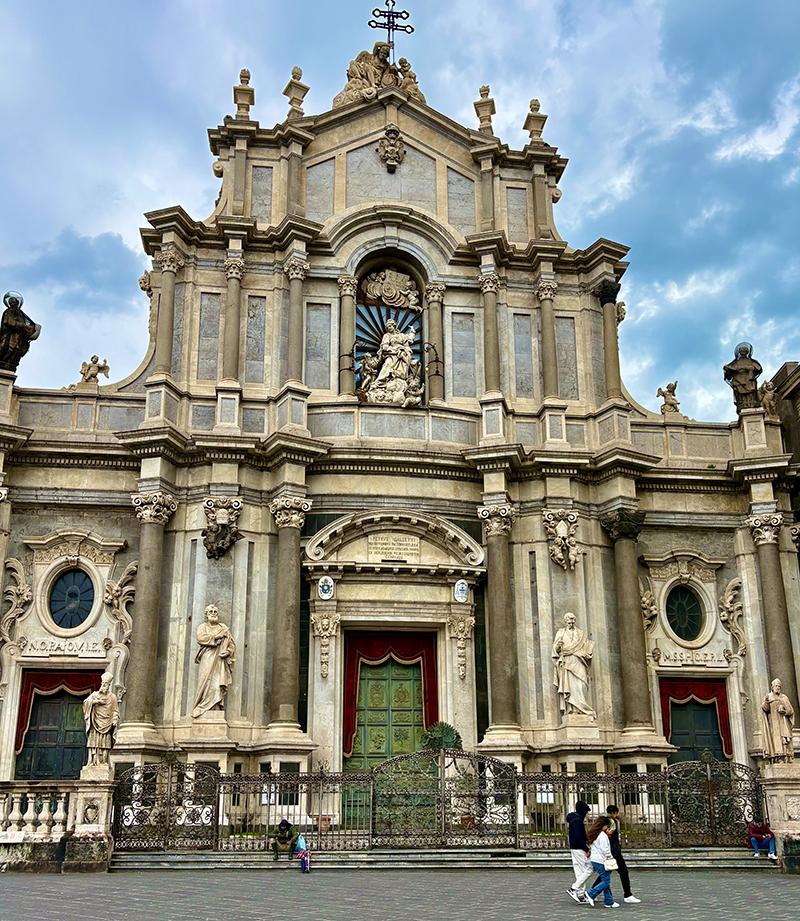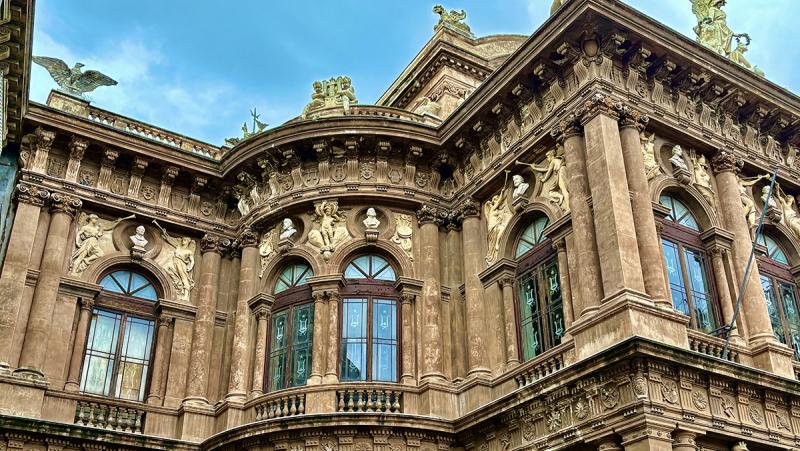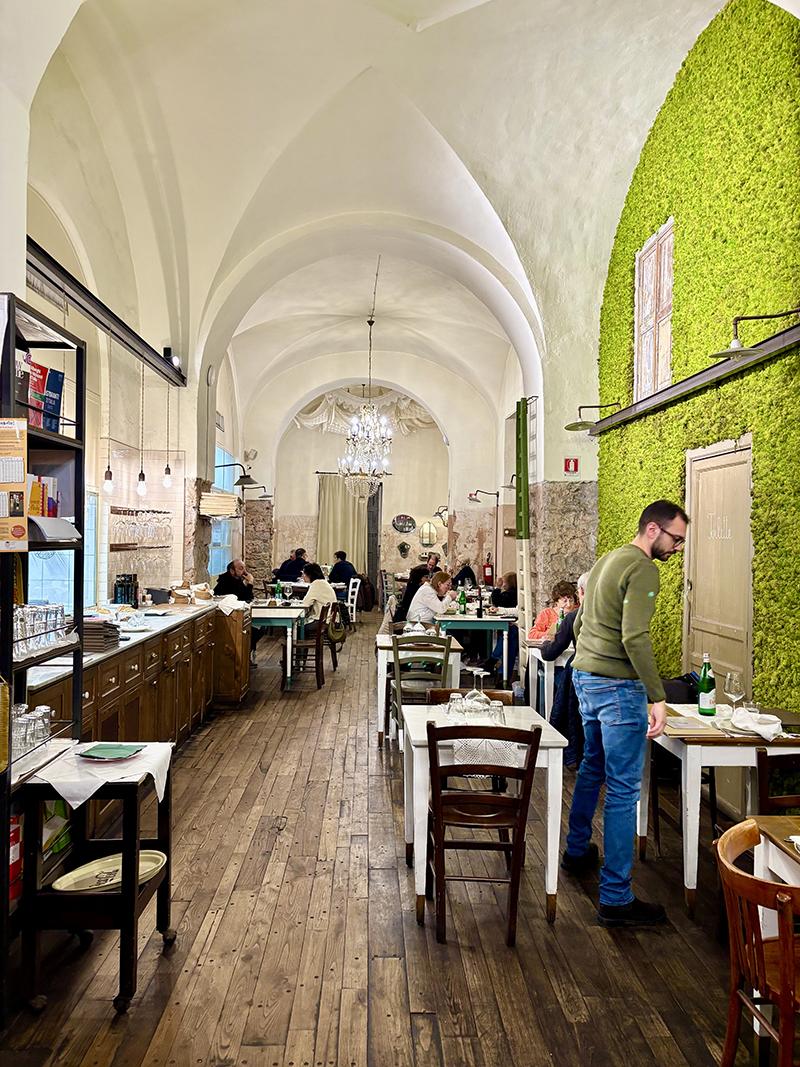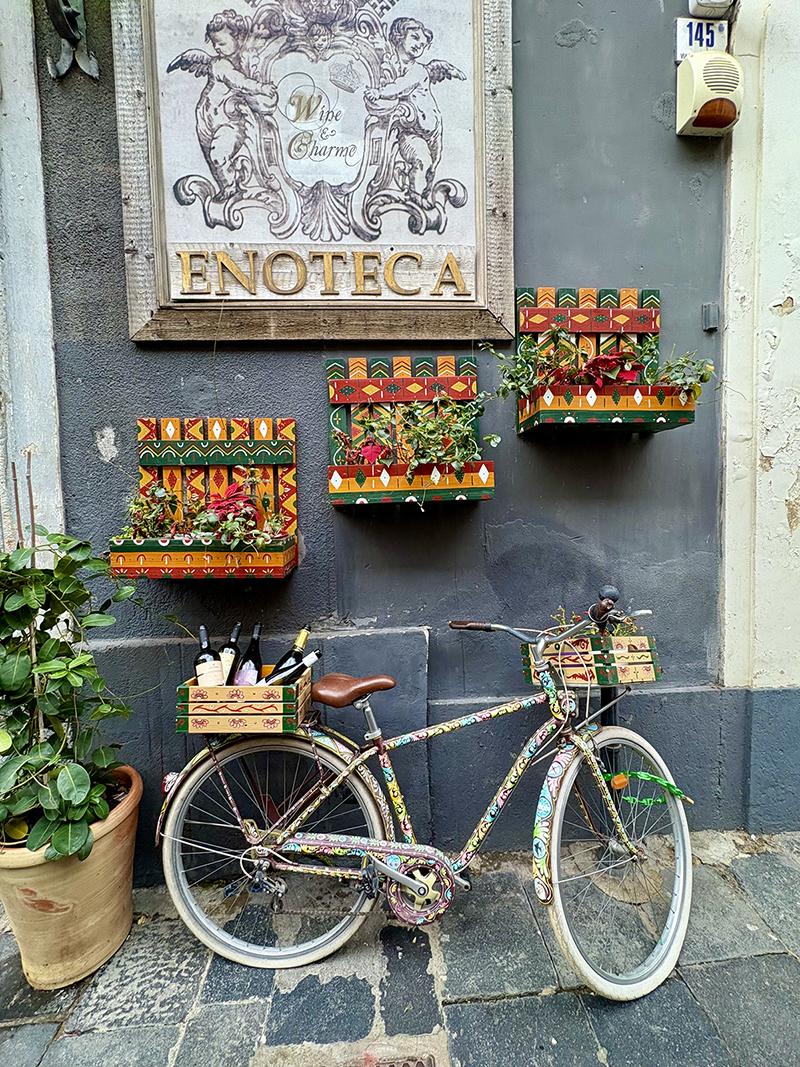We live in Paris, and although we feel lucky to live in the most beautiful city in the world, the winters can be challenging. Even though the temperatures are not super-cold, averaging about 40 to 42 degrees Fahrenheit, it’s a damp, bone-chilling cold, making it feel a few degrees cooler than it really is. On top of that, it’s constantly gray and overcast, with little to no sunshine for days at a time. To relieve the melancholy of winter this year, we decided to go to Catania in Sicily for a week, where the sun shone everyday and the temperature was about 65 degrees everyday.
On the east coast of Sicily bordering the Ionian Sea, Catania is the second largest city on the island, with a population close to 300,000 people. Much lesser known than popular tourist sites such as Palermo, Siracusa and the over-touristed Taormina, which was put on the map as a result of Season 2 of "The White Lotus" television series, Catania is a delightful destination, rich with Baroque architecture, delicious local cuisine, impressive museums and art institutions, fun shopping, a famed opera house and a well-known seafood market.
In the winter, there are no direct flights to Catania, so we flew to Rome, had about a 60-minute layover and then took a flight to Catania in the same terminal.
Arriving late morning, we savored a macchiato and a plate of Italian butter cookies at a café on the main square of Catania, Piazza del Duomo, where some of the more significant monuments stand, such as the magnificent Saint Agatha Cathedral, Palazzo degli Elefanti/City Hall, the majestic Saint Agatha Cathedral and the elephant fountain, all constructed in the 1700s, after the 1693 earthquake. Just off the square is Via Etnea, the main shopping street of Catania, with a view of snow-capped Mount Etna.

Walking down a quiet, side street we found one of the top boutique hotels in Catania, practically hidden from view, with an almost unnoticeable plaque on the outside saying, Asmundo di Gisira Art Market Living Boutique. Thinking it was an art gallery, we stepped inside only to discover it was a hotel. One of the staff was kind enough to give us a tour and we were fascinated by the history of the building and the dazzling décor of the spacious suites. A former palazzo built just after the 1693 earthquake, on the beautiful Piazza Mazzini, Asmundo di Gisira, has 11 rooms, all individually decorated. There are two room categories: the Art Rooms, which are contemporary suites measuring 350 square feet to the top suite measuring 650 square feet with a terrace, and the Neo- Classical Rooms and Suites, which are decorated in Baroque style. The Suite Bellini, name after the composer who was born in Catania, has a grand piano, living room and private balcony. The top suite in the Art Rooms category, Prosperina, named after the goddess of the afterlife, has a hand-painted frescoed ceiling, living room, bedroom and furnished terrace. Other special amenities in the rooms include minibar with organic products, waterfall and storm rain shower, Chromotherapy, a scent menu, and hypoallergenic duvets and pillows. The rooftop space has a solarium, garden, and sweeping views of the city.

Catania has a surprising number of museums and art institutions for a city of its size. The Bellini Museum, named after that famed composer who wrote 10 operas, including "Norma," has musical instruments, artifacts, and informative interactive displays housed in the composer’s former palazzo. Contrasting the new and the old, Fondazione Puglisi Cosentino, in a 18th-century palazzo, has a contemporary, 20th-century art collection with works by by Sol LeWitt, Ai Wei Wei, Sandro Chia, Marina Abramović, and Jeff Koons. Museo Emilio Greco is home to the striking charcoal portraits and sculptures by the 20th-century Sicilian artist Emilio Greco.
The Benedictine Monastery of San Nicolò l’Arena, was a highlight of our trip. One of the largest monasteries in Europe, it was originally constructed in 1558 but later rebuilt after two natural disasters: a lava eruption in 1669 and the earthquake of 1693. We took a guided 80-minute tour of the monastery, gardens, living quarters and the offices of the clergy. Neglected in the early 20th century, it was taken over by the University of Catania and an extensive renovation took place over a 30-year period. Today, the monastery is listed as a UNESCO World Heritage site.

Overall, the food and drink in Catania was excellent—and at reasonable prices. Lunch for two at Trattoria Cavaliere consisted of two enormous bowls of pasta, grilled radicchio, espresso and bottled water for €21. We loved the upscale restaurant Me Cumpari Turiddu so much we went twice for dinner. Promoting the art of slow cooking, menu specialties include artichoke, sausage and potato tart, rabbit stew, fish stew with a red sauce, pasta with Sicilian lemons, and a super-delicious Sacher-style torte with an orange jam. Legatoria Prampolini is a Bohemian-style café, art gallery and bookstore, which makes superb coffee, focaccia sandwiches, and yummy, home-baked cookies and cakes.
Colorful, local-made ceramics fill the shelves of most of the souvenir and gift shops in Catania—many of which are styled after acorns, believed to bring prosperity. We bought most of our gifts, including small ceramics, cloth napkins, candles and painted tote bags from two boutiques, Colori del Sole and Wine and Charme (also a wine bar), specializing in regional crafts and products.

The lively and expansive fish market, open every day from 7 a.m. to 2 p.m. (except Monday), has an incredible abundance of local catches such as swordfish, prawns, oysters, sardines, squid and tuna.
Teatro Massimo Bellini, the Catania opera house, presents not only Bellini’s much-loved operas, it also stages classical concerts and other Italian operas. Tours of the inside are given during the day.
We were there the week before The Festival of Saint Agatha, the biggest event of the year, celebrating the patron saint Agatha of Sicily, who was said to have protected the people from eruptions of nearby Mount Etna, earthquakes and plagues. Close to a million people from around the world attend the festivities, which include church marches, a race across the streets of the city and an evening concert in the Piazza del Duomo, followed by fireworks. We experienced various pre-celebrations at some of the churches, with processions of people singing and carrying extravagant displays of flowers, candles and flags.
We also took two day trips from Catania, to Taormina and Siracusa, which are about 75 minutes away by car.
Related Stories
Railbookers Offers Exclusive After-Hours Tour of the Vatican